In today’s fast-paced business environment, staying ahead of the competition requires making informed decisions based on accurate data. One crucial tool for achieving this is a sales forecast. By predicting future sales, businesses can allocate resources effectively, budget strategically, and plan operations efficiently.
In this article, we will explore the what, why, and how of sales forecasts, provide examples, and offer tips for successful implementation.
What is a Sales Forecast?
A sales forecast is a document or tool that predicts future sales based on historical data, market trends, and other relevant factors. It enables businesses to estimate their future revenue and plan accordingly. A well-designed sales forecast takes into account various variables such as seasonality, market conditions, consumer behavior, and internal factors like marketing strategies and product launches.
Creating a sales forecast involves analyzing past sales data, identifying patterns, and projecting those patterns into the future. This process provides businesses with valuable insights and helps them make informed decisions about resource allocation, budgeting, and operational planning.
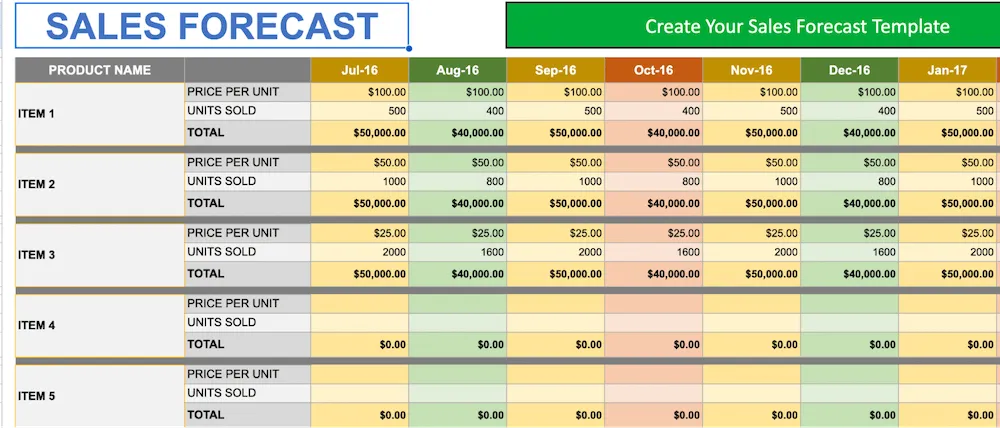
Why are Sales Forecasts Important?
Sales forecasts play a vital role in the decision-making process of businesses. Here are some key reasons why they are important:
- Resource Allocation: By accurately predicting future sales, businesses can allocate their resources effectively. This includes determining the right amount of inventory to have on hand, staffing levels, and production capacity. Avoiding overstocking or understocking helps minimize costs and maximize profitability.
- Budgeting: A sales forecast provides the information needed to create a realistic budget. It helps businesses estimate their revenue and plan their expenses accordingly. This allows for better financial planning and ensures that funds are allocated to the areas that need them the most.
- Operational Planning: Knowing the expected sales volume in advance allows businesses to plan their operations more efficiently. They can schedule production, manage supply chains, and coordinate logistics to meet customer demand effectively. This helps avoid bottlenecks, delays, and customer dissatisfaction.
- Identifying Growth Opportunities: Sales forecasts can reveal potential growth opportunities by identifying emerging trends or untapped markets. Businesses can use this information to develop new products or services, target specific customer segments, or enter new geographical regions.
- Investor Confidence: Having a well-prepared sales forecast can boost investor confidence. It demonstrates that the business has a clear understanding of its market and is taking proactive steps to drive growth. This can attract potential investors and secure funding for future expansion.
How to Create a Sales Forecast
Creating a sales forecast requires a systematic approach and careful analysis of relevant data. Here are the steps to follow:
1. Gather Historical Sales Data
Start by collecting historical sales data for a specific period, preferably at least one year. This data should include sales figures, customer information, and any other relevant metrics. Organize the data in a spreadsheet or sales forecasting software for easier analysis.
2. Identify Patterns and Trends
Once you have the data, analyze it to identify patterns and trends. Look for seasonal fluctuations, growth patterns, and any other factors that may impact sales. This analysis will help you understand the underlying drivers of your business’s sales performance.
3. Consider Market Factors
Take into account external factors that may influence your sales, such as changes in the economy, industry trends, or competitor activities. Research market reports, industry publications, and customer feedback to gain insights into the broader market environment.
4. Forecast Future Sales
Using the historical data and market factors, project your future sales. This can be done using various methods, such as trend analysis, regression models, or industry benchmarks. Consider different scenarios and assumptions to create a range of possible outcomes.
5. Review and Refine
Review your forecast regularly and refine it based on actual sales data. As new information becomes available, update your forecast to ensure its accuracy. This ongoing process will help you make more precise predictions and adjust your strategies accordingly.
Examples of Sales Forecasts
Here are a few examples of how businesses can use sales forecasts:
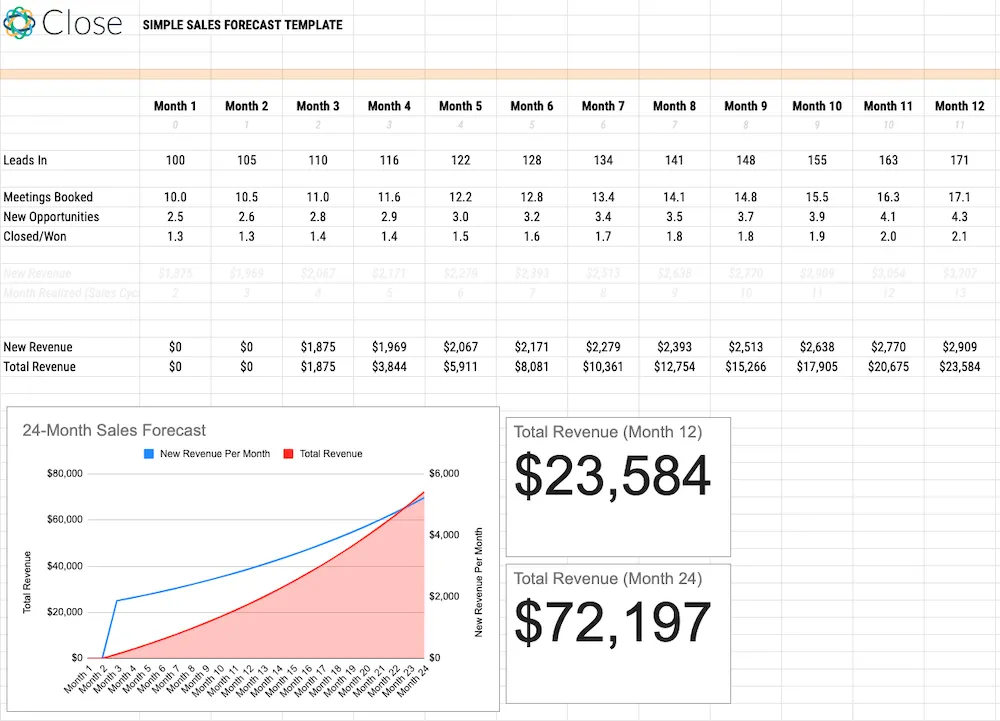
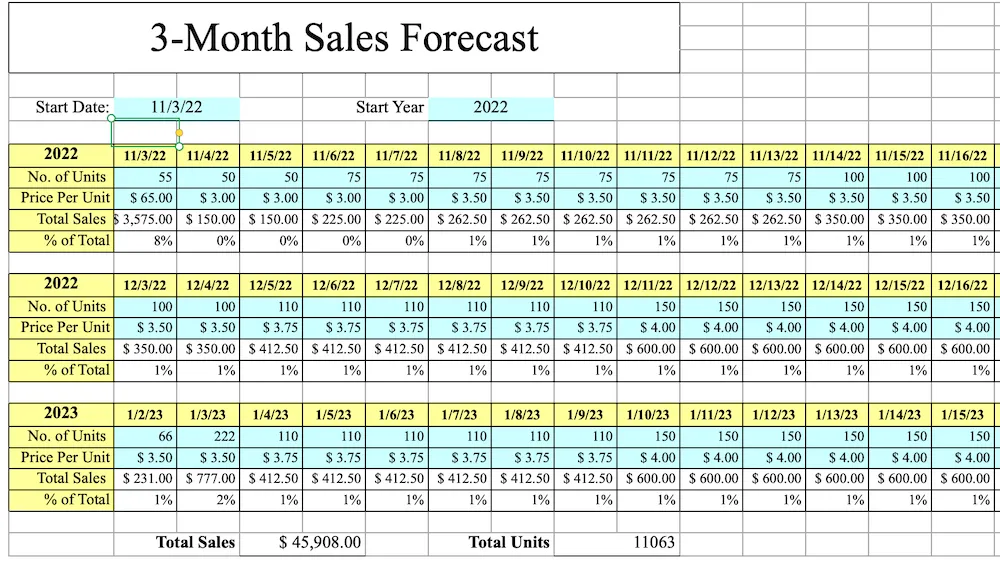
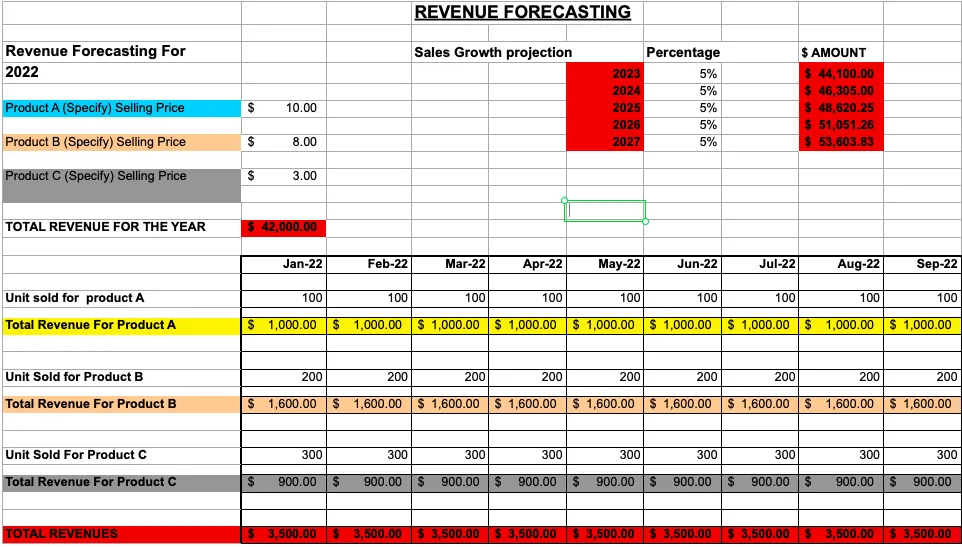
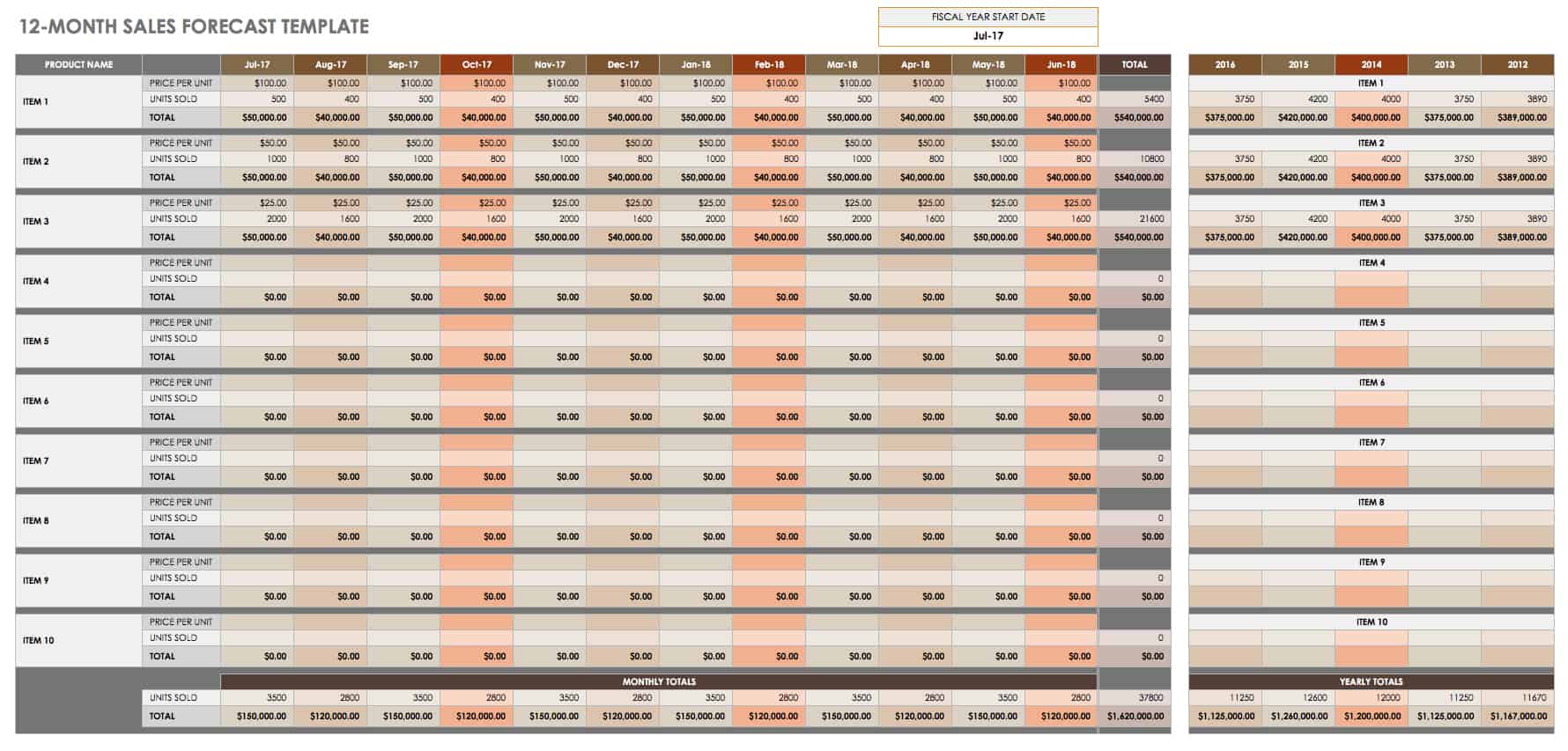
Tips for Successful Sales Forecasting
Here are some tips to improve the accuracy and effectiveness of your sales forecasts:
- Use Multiple Data Sources: Don’t rely solely on historical sales data. Consider incorporating market research, customer surveys, and industry reports to gain a broader perspective.
- Involve Key Stakeholders: Collaborate with sales teams, marketing teams, and other relevant stakeholders to gather insights and gain a holistic understanding of the market dynamics.
- Regularly update your Forecast: As new information becomes available, update your forecast to reflect the latest trends and market conditions. This will ensure its accuracy and relevance.
- Monitor and Analyze Actual Sales: Compare your forecasted sales with actual sales data on an ongoing basis. This will help you identify any discrepancies and adjust your strategies accordingly.
- Be Realistic: Avoid overestimating or underestimating your sales. Base your forecast on realistic assumptions and take into account any potential risks or uncertainties.
By implementing these tips and best practices, businesses can enhance their decision-making capabilities and gain a competitive edge in the market.
Conclusion
A sales forecast is a powerful tool that enables businesses to predict future sales and make informed decisions. By allocating resources effectively, budgeting strategically, and planning operations efficiently, businesses can maximize their profitability and stay ahead of the competition.
By following the steps outlined in this article and implementing the tips provided, businesses can create accurate and actionable sales forecasts that drive growth and success.
Sales Forecast Template – Download